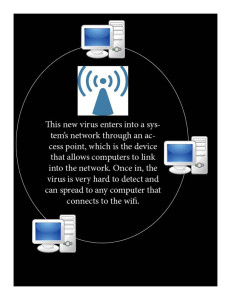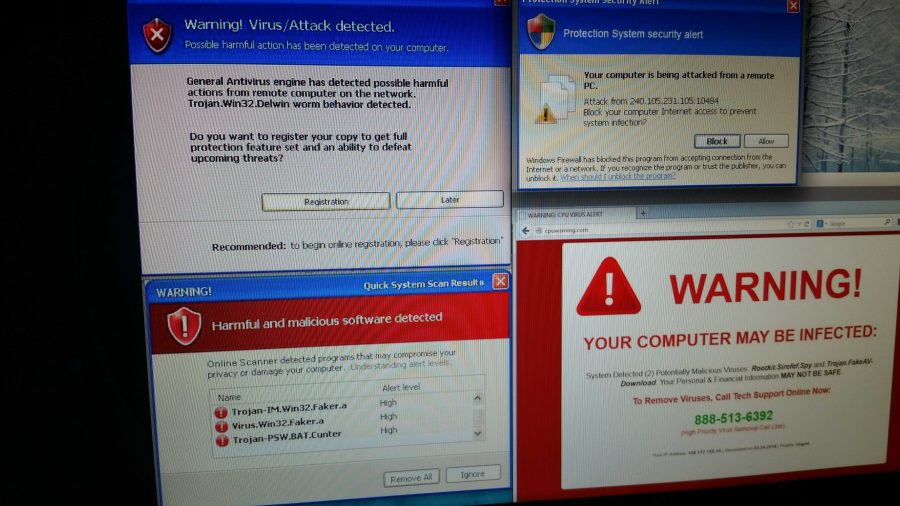Liverpool scientists create next-generation computer virus
April 18, 2014
The world has changed and these days, teens are on the Internet constantly. Parents always warned their kids that the Internet could be dangerous, but scientists in Liverpool have brought a whole new meaning to Internet danger. The scientists created a simulation of a virus that, for the first time, can be transferred through Wi-Fi. They named the virus “Chameleon.”
The virus is a complete game changer in the world of technology. It is being referred to as the common cold of viruses because, when it goes “airborne,” it can spread to a vast number of devices very quickly. But it did not get the name Chameleon for nothing. The virus is also very advanced and can rarely be detected.

TheDailycaller.com stated, “The secret to Chameleon is the method by which it avoids detection. Traditional computer antivirus programs look for viruses present on computers and the Internet itself. Chameleon sticks strictly to Wi-Fi networks.”
Viruses that cannot be detected by the current anti-virus software is the future for technology, now, the software will have to advance along with the viruses in order to keep society safe.
A statement from Liverpool University said, “Researchers from the University’s School of Computer Science and Electrical Engineering and Electronics, simulated an attack on Belfast and London in a laboratory setting, and found that “Chameleon” behaved like an airborne virus, traveling across the Wi-Fi network via access points (APs) that connect households and businesses to Wi-Fi networks.”
The virus does not hack Wi-Fi the way an average hacker would. The average hacker disrupts the system and breaks their way in, whereas this virus simply finds weak points in the Wi-Fi network and slips into the devices unnoticed and without disrupting the system.
In a statement published by the University of Liverpool, Alan Marshal stated, “When ‘Chameleon’ attacked an AP it didn’t affect how it worked, but was able to collect and report the credentials of all other Wi-Fi users who connected to it. The virus then sought out other Wi-Fi AP’s that it could connect to and infect.”
AP stands for access point. These are individual to each computer, an AP address, and it is what connects a device to a Wi-Fi network. They can also be used to find a specific computer and its location, this tracking method is often used by law enforcement.
Marshall later added, “Wi-Fi connections are increasingly a target for computer hackers because of well-documented security vulnerabilities, which make it difficult to detect and defend against a virus.”
Luckily, “Chameleon” is just a simulation, at least for now. As the technology in the world continues to change it also becomes more dangerous, which in return makes it more difficult to protect personal information.







